Details for FTAs in Effect



AANZFTA
ASEAN-Australia and New Zealand
Free Trade Agreement
1 January 2010


ACFTA
ASEAN-People's Republic of China Comprehensive
Economic Cooperation Agreement
1 July 2005


AHKFTA
ASEAN-Hong Kong
Free Trade Agreement
1 January 2019


AIFTA
ASEAN-India Comprehensive
Economic Cooperation Agreement
1 January 2010


AJCEPA
ASEAN-Japan Comprehensive
Economic Partnership
1 December 2008


AKFTA
ASEAN-Republic of Korea Comprehensive Economic
Cooperation Agreement
1 June 2007

ATIGA
ASEAN Free Trade Area
1 January 1993





PH-EFTA FTA
Philippines-European Free Trade Association
Free Trade Agreement
1 June 2018


PJEPA
Philippines-Japan Economic
Partnership Agreement
11 December 2008






RCEP
Regional Comprehensive Economic
Partnership
2 June 2023






RCEP
Regional Comprehensive Economic Partnership
2 June 2023
The Significance of the Agreement
Agreement Overview
The Regional Comprehensive Economic Partnership (RCEP) is a large-scale economic cooperation agreement that includes the 10 ASEAN countries (Brunei, Cambodia, Indonesia, Laos, Malaysia, Myanmar, the Philippines, Singapore, Thailand, Vietnam) and their key trade partners (China, Japan, South Korea, Australia, New Zealand). RCEP is the world's largest free trade agreement, aiming to achieve economic integration in the Asia-Pacific region by lowering trade and investment barriers and enhancing economic cooperation.
Key Benefits
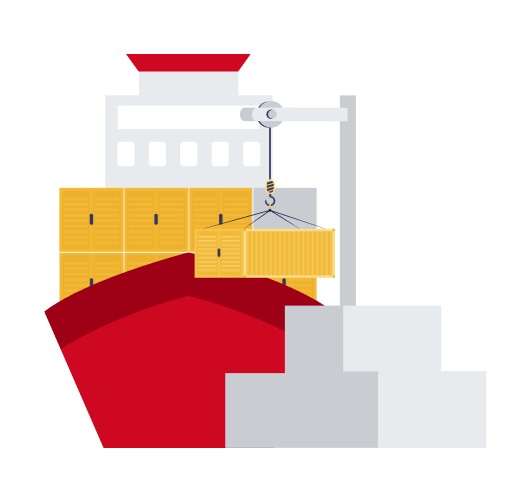
Reducing tariff and non-tariff barriers to promote trade among member countries.

Increasing bilateral investments through investment protection and promotion clauses.

Stimulating economic growth and creating jobs in participating countries.

Enhancing the stability and efficiency of regional supply chains.

Promoting digital economy through market opening and regulatory relaxation in services and e-commerce.
Expected Effects
- Increased
Exports - Investment
Inflow - Strengthened
Economic
Ties
-
Increased Exports
Expanding the market for Philippine agricultural products, seafood, and electronic goods in RCEP member countries.
-
Investment Inflow
Encouraging technology and financial services from RCEP member countries to invest in the Philippines.
-
Strengthened Economic Ties
Enhancing mutual economic ties and fostering sustainable growth.
The Significance of the Agreement Signing
The signing of the RCEP agreement represents a new paradigm in multilateral trade agreements. The key significances are:
Deepened Economic Integration
RCEP promotes economic integration in the Asia-Pacific region, increasing economic interdependence and strengthening cooperative relationships among member countries. This leads to the activation of trade and investment in the region, fostering sustainable economic growth.
Strengthened Global Economic Order
RCEP strengthens the multilateral trading system and counteracts protectionist tendencies, creating a free and fair trade environment. This stabilizes the global economic order and helps member countries maintain competitiveness in the global market.
Stabilized Supply Chains
RCEP enhances supply chains among member countries and optimizes regional production networks, increasing the stability of global supply chains. This is crucial for enhancing supply chain resilience during global crises like the COVID-19 pandemic.
Support for SMEs
RCEP expands opportunities for small and medium-sized enterprises (SMEs) to access new markets and participate in international trade. This promotes the growth and development of SMEs and increases inclusivity and diversity in the regional economy.
Promotion of the Digital Economy
RCEP supports the growth of the digital economy by relaxing regulations on e-commerce and promoting digital trade. This helps member countries adapt to the fourth industrial revolution and strengthens economic competitiveness through technological innovation.
Importance of Target Country Markets in the Agreement
Overview of RCEP Countries
RCEP accounts for approximately 30% of the global population, about 30% of global GDP, and around 27% of world trade. RCEP member countries have varying economic sizes and growth potentials, providing significant market opportunities for Philippine businesses.
Economic Significance
Known for its resources and agricultural strength, Australia is a key market for Philippine agricultural and seafood exports. Opportunities exist for Filipino businesses to invest in Australia’s agricultural technology and resource sectors, fostering agricultural and resource cooperation between the two countries.
Major Industries and Trade Items
Economic Significance
As the world's second-largest economy, China has a high demand for Philippine electronics, agricultural products, and seafood, serving as a major market for Philippine exports. The accessibility of Chinese e-commerce platforms facilitates easier market entry for Filipino companies, aiding in export expansion.
Major Industries and Trade Items
Economic Significance
A technologically advanced economic powerhouse, Japan actively imports Philippine agricultural and seafood products. The strong demand for high-quality Philippine goods supports a growing trade relationship, while economic cooperation allows Filipino businesses access to Japanese technology and market opportunities.
Major Industries and Trade Items
Economic Significance
With a strong focus on agriculture and dairy, New Zealand is an important trading partner for the Philippines in agricultural products and dairy. Filipino agricultural products are popular as health foods in New Zealand, providing growth potential in the food processing and agricultural industries.
Major Industries and Trade Items
Economic Significance
South Korea maintains complementary trade with the Philippines in electronics, automotive parts, and agricultural products. Philippine agricultural products and electronic components are highly sought in the Korean market, allowing Filipino companies to benefit from stable export and growth opportunities through bilateral cooperation.
Major Industries and Trade Items
FTA Negotiation Timeline
November Negotiation Launched
Early Negotiations commenced
November Agreement signed
February PH Domestic Ratification concluded
June Agreement Entered into force for PH
Agreement Document
Partner Country Information
Country Overview and Economic Trends

-
Capital
Canberra
-
Language
English
-
Population
Approximately 25.6 million
-
Economy
Resource-rich country, major industries include agriculture, mineral resources, financial services
-
Trade
In 2023, trade volume with the Philippines was approximately $10 billion, with major Philippine exports being agricultural and mineral resources, and imports being agricultural products and minerals.
Trade and Investment Opportunities
-
Trade Opportunities
Australia offers significant potential for Philippine exports of agricultural products, seafood, and mineral resources.
-
Mineral Resources
Supplying nickel, copper, and other mineral resources from the Philippines to Australia's mineral processing industries.
-
Seafood
High demand for Philippine tuna and shrimp in the Australian market.
-
Investment Opportunities
There are numerous opportunities for Philippine companies to invest in Australia's agricultural technology, mining, and education services sectors.
-
Agricultural Technology
Philippine agricultural businesses can adopt advanced Australian agricultural technology to improve productivity.
-
Education Services
Collaboration with Australian education providers to attract international students to the Philippines.
Country Overview and Economic Trends
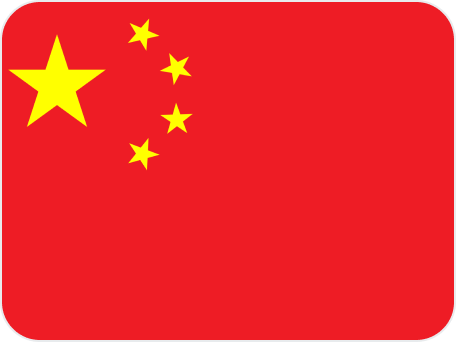
-
Capital
Beijing
-
Language
Chinese (Mandarin)
-
Population
Approximately 1.4 billion
-
Economy
World's second-largest economy, major industries include manufacturing, electronics, textiles
-
Trade
In 2023, trade volume with the Philippines was approximately $68 billion, with major Philippine exports being electronics and agricultural products, and imports being machinery and textiles.
Trade and Investment Opportunities
-
Trade Opportunities
China offers substantial potential for Philippine exports of electronics, clothing, appliances, and agricultural products. The rapid growth of e-commerce in China allows Philippine businesses to easily access the Chinese market through online platforms.
-
E-commerce
Philippine businesses can leverage large Chinese e-commerce platforms like Alibaba and JD.com to sell their products.
-
Agricultural Products
High demand for Philippine mangoes, bananas, and other agricultural products in the Chinese market.
-
Investment Opportunities
There are numerous opportunities for Philippine companies to invest in China's manufacturing, tech startups, and e-commerce sectors. In particular, the Chinese government's emphasis on green and sustainable energy projects offers investment potential.
-
Smart Cities
Philippine companies can collaborate on smart city projects in China to enhance technological cooperation.
-
Green Energy
Opportunities in solar, wind, and other renewable energy projects.
Country Overview and Economic Trends

-
Capital
Tokyo
-
Language
Japanese
-
Population
Approximately 126 million
-
Economy
World's second-largest economy, major industries include manufacturing, electronics, textiles
-
Trade
In 2023, trade volume with the Philippines was approximately $20 billion, with major Philippine exports being electronics and seafood, and imports being automobiles and machinery.
Trade and Investment Opportunities
-
Trade Opportunities
Japan is a favorable market for Philippine exports of automotive parts, electronics, and seafood. Philippine high-quality agricultural products and seafood are popular among Japanese consumers.
-
Seafood
High demand for Philippine tuna, shrimp, and other seafood in Japan.
-
Agricultural Products
Philippine mangoes, bananas, and other agricultural products can be sold through Japan's extensive food distribution networks.
-
Investment Opportunities
Philippine businesses can invest in Japan's automotive, robotics, and medical device industries. Participating in Japan's smart city development projects also offers opportunities to enhance technological cooperation.
-
Automotive Parts
Collaboration with Japanese automotive manufacturers to supply parts.
-
Robotics
Adopting Japanese robotics technology to improve manufacturing efficiency in the Philippines.
Country Overview and Economic Trends

-
Capital
Wellington
-
Language
English, Māori
-
Population
Approximately 5 million
-
Economy
Agriculture and tourism-focused, major industries include dairy products, agricultural products, tourism
-
Trade
In 2023, trade volume with the Philippines was approximately $2 billion, with major Philippine exports being agricultural products and dairy, and imports being agricultural products and dairy.
Trade and Investment Opportunities
-
Trade Opportunities
New Zealand provides significant potential for Philippine exports of dairy products, agricultural products, and tourism services.
-
Dairy Products
Philippine dairy processing companies can use New Zealand raw materials to produce goods.
-
Agricultural Products
Philippine agricultural products are popular as health foods in the New Zealand market.
-
Investment Opportunities
There are numerous opportunities for Philippine companies to invest in New Zealand's agricultural technology, tourism, and renewable energy sectors.
-
Renewable Energy
Philippine companies can participate in New Zealand's renewable energy projects to enhance technological cooperation.
-
Tourism
Philippine tourism companies can collaborate with New Zealand to develop tourism packages and attract international tourists.
Country Overview and Economic Trends
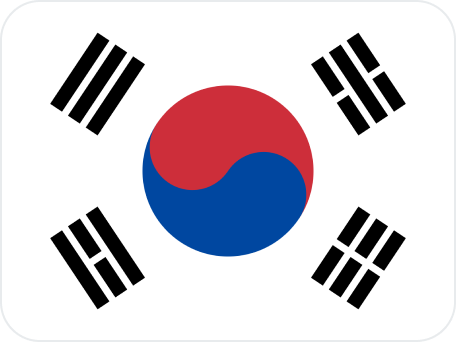
-
Capital
Seoul
-
Language
Korean
-
Population
Approximately 52 million
-
Economy
World's tenth-largest economy, major industries include electronics, automobiles, petrochemical products
-
Trade
In 2023, trade volume with the Philippines was approximately $15 billion, with major Philippine exports being electronics and agricultural products, and imports being electronics and petrochemical products.
Trade and Investment Opportunities
-
Trade Opportunities
South Korea is an ideal market for Philippine exports of electronics, automotive parts, and petrochemical products. Philippine agricultural products and seafood also appeal to Korean consumers.
-
Electronics
Supplying semiconductors and electronic components to South Korean electronics manufacturers.
-
Agricultural Products
High demand for Philippine mangoes, pineapples, and bananas in the Korean market.
-
Investment Opportunities
Significant opportunities for Philippine businesses to invest in South Korea's information technology (IT), semiconductor, and biotechnology sectors. Additionally, participating in South Korea's smart city projects can enhance technological cooperation.
-
IT Cooperation
Collaborating with South Korean IT companies to advance technology in the Philippines.
-
Biotechnology
Opportunities in biopharmaceuticals and healthcare sectors.
Origin Determination Document
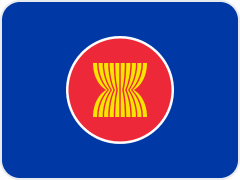

AHKFTA
ASEAN-Hong Kong Free Trade Agreement
1 January 2019
The Significance of the Agreement
Agreement Overview
The ASEAN-Hong Kong Free Trade Agreement (AHKFTA) is an agreement aimed at enhancing economic cooperation and reducing trade and investment barriers between the 10 ASEAN countries (Brunei, Cambodia, Indonesia, Laos, Malaysia, Myanmar, the Philippines, Singapore, Thailand, Vietnam) and Hong Kong. AHKFTA promotes cooperation in various areas including goods, services, and investment, with the goal of economic integration.
Key Benefits

Reducing tariff and non-tariff barriers to promote trade among member countries.

Increasing bilateral investments through investment protection and promotion clauses.

Stimulating economic growth and creating jobs in participating countries.

Enhancing the stability and efficiency of regional supply chains.

Promoting economic cooperation through market opening and regulatory relaxation in services and finance.
Expected Effects
- Increased
Exports - Investment
Inflow - Strengthened
Economic
Ties
-
Increased Exports
Expanding the market for Philippine agricultural products, seafood, and electronic goods in Hong Kong.
-
Investment Inflow
Encouraging Hong Kong's technology and financial services to invest in the Philippines.
-
Strengthened Economic Ties
Enhancing mutual economic ties and fostering sustainable growth.
The Significance of the Agreement Signing
The signing of the AHKFTA represents a new paradigm in multilateral trade agreements. The key significances are:
Deepened Economic Integration
AHKFTA promotes economic integration between ASEAN and Hong Kong, increasing economic interdependence and strengthening cooperative relationships among member countries. This leads to the activation of trade and investment in the region, fostering sustainable economic growth.
Strengthened Global Economic Order
AHKFTA strengthens the multilateral trading system and counteracts protectionist tendencies, creating a free and fair trade environment. This stabilizes the global economic order and helps member countries maintain competitiveness in the global market.
Stabilized Supply Chains
AHKFTA enhances supply chains among member countries and optimizes regional production networks, increasing the stability of global supply chains. This is crucial for enhancing supply chain resilience during global crises like the COVID-19 pandemic.
Support for SMEs
AHKFTA expands opportunities for small and medium-sized enterprises (SMEs) to access new markets and participate in international trade. This promotes the growth and development of SMEs and increases inclusivity and diversity in the regional economy.
Promotion of the Digital Economy
AHKFTA supports the growth of financial services by opening financial markets and relaxing regulations. This helps member countries enhance economic competitiveness through financial technology innovation.
Importance of Target Country Markets in the Agreement
Overview of Hong Kong
Hong Kong is a global financial hub and a significant economic center in Asia. With high purchasing power and an open economic structure, there is substantial demand for Philippine products.
Economic Significance
- i. Financial Hub: Hong Kong is a global financial center, making it an important market for Philippine businesses.
- ii. Trade Gateway: Hong Kong serves as a crucial gateway for entering the Asian market.
- iii. High Purchasing Power: Hong Kong has a high standard of living and purchasing power, creating continuous demand for Philippine products.
Major Industries and Trade Items
Hong Kong has a highly developed financial services sector, offering a variety of financial products and services.
Hong Kong is a global trade hub with an efficient logistics system.
Hong Kong plays a significant role in real estate development and infrastructure construction.
FTA Negotiation Timeline
November Negotiations commenced
November Agreement signed
June Agreement Entered into force for PH
January First phase of tariff reduction implemented
January Additional service sector opening
Agreement Document
Partner Country Information
Country Overview and Economic Trends

-
Capital
None (central city: Hong Kong)
-
Language
Chinese (Cantonese), English
-
Population
Approximately 7.5 million
-
Economy
Financial hub, major industries include financial services, trade and logistics, real estate
-
Trade
In 2023, trade volume with the Philippines was approximately $9 billion, with major Philippine exports being electronics and agricultural products, and imports being financial services and investment capital.
Trade and Investment Opportunities
-
Trade Opportunities
Hong Kong offers substantial potential for Philippine exports of agricultural products, seafood, and electronic goods. The high standard of living and purchasing power in Hong Kong creates continuous demand for Philippine products.
-
Electronic
Philippine electronics are in high demand in the Hong Kong market.
-
Agricultural Products
Philippine mangoes, bananas, and other agricultural products are popular among Hong Kong consumers.
-
Investment Opportunities
There are numerous opportunities for Philippine companies to invest in Hong Kong's financial services, real estate development, and trade and logistics sectors.
-
Financial Services
Philippine companies can invest in Hong Kong's financial services industry to adopt financial technology.
-
Real Estate Development
Hong Kong's real estate market is stable and offers high returns, making it an attractive investment destination for Philippine companies.
-
Logistics
Philippine logistics companies can leverage Hong Kong's efficient logistics system to expand into Asian and global markets.
Origin Determination Document





PH-EFTA FTA
Philippines-European Free Trade Association Free Trade Agreement
1 June 2018
The Significance of the Agreement
Agreement Overview
The Philippines-European Free Trade Association Free Trade Agreement (PH-EFTA FTA) is an agreement aimed at enhancing economic cooperation and reducing trade and investment barriers between the Philippines and the European Free Trade Association (EFTA) member countries (Iceland, Liechtenstein, Norway, Switzerland). PH-EFTA FTA promotes cooperation in various areas including goods, services, and investment, with the goal of economic integration.
Key Benefits

Reducing tariff and non-tariff barriers to promote trade among member countries.

Increasing bilateral investments through investment protection and promotion clauses.

Stimulating economic growth and creating jobs in participating countries.

Enhancing the stability and efficiency of regional supply chains.

Promoting economic cooperation through market opening and regulatory relaxation in services and finance.
Expected Effects
- Increased
Exports - Investment
Inflow - Strengthened
Economic
Ties
-
Increased Exports
Expanding the market for Philippine agricultural products, seafood, and electronic goods in EFTA member countries.
-
Investment Inflow
Encouraging EFTA member countries' technology and financial services to invest in the Philippines.
-
Strengthened Economic Ties
Enhancing mutual economic ties and fostering sustainable growth.
The Significance of the Agreement Signing
The signing of the PH-EFTA FTA represents a new paradigm in multilateral trade agreements. The key significances are:
Deepened Economic Integration
PH-EFTA FTA promotes economic integration between the Philippines and EFTA member countries, increasing economic interdependence and strengthening cooperative relationships among member countries. This leads to the activation of trade and investment in the region, fostering sustainable economic growth.
Strengthened Global Economic Order
PH-EFTA FTA strengthens the multilateral trading system and counteracts protectionist tendencies, creating a free and fair trade environment. This stabilizes the global economic order and helps member countries maintain competitiveness in the global market.
Stabilized Supply Chains
PH-EFTA FTA enhances supply chains among member countries and optimizes regional production networks, increasing the stability of global supply chains. This is crucial for enhancing supply chain resilience during global crises like the COVID-19 pandemic.
Support for SMEs
PH-EFTA FTA expands opportunities for small and medium-sized enterprises (SMEs) to access new markets and participate in international trade. This promotes the growth and development of SMEs and increases inclusivity and diversity in the regional economy.
Promotion of the Digital Economy
PH-EFTA FTA supports the growth of financial services by opening financial markets and relaxing regulations. This helps member countries enhance economic competitiveness through financial technology innovation.
Importance of Target Country Markets in the Agreement
Overview of EFTA Countries
EFTA consists of four countries: Iceland, Liechtenstein, Norway, and Switzerland. These countries have high purchasing power and advanced economic structures, providing significant market opportunities for Philippine products and services.
Economic Significance
Iceland is rich in natural resources and tourism, with strong demand for seafood and agricultural products from the Philippines. The Icelandic economy, centered on fisheries, energy, and tourism, provides opportunities for Filipino exporters, especially in seafood. Additionally, Philippine energy companies may find investment opportunities in Iceland’s renewable energy projects.
Major Industries and Trade Items
Economic Significance
A highly industrialized nation with a focus on financial services, Liechtenstein offers a stable market for Philippine electronics and high-quality agricultural products. The country’s advanced manufacturing sector and robust financial services provide opportunities for Philippine companies to enter the European financial network and adopt innovative manufacturing technologies.
Major Industries and Trade Items
Economic Significance
Norway’s economy, driven by maritime industries, energy, and manufacturing, offers significant demand for Philippine agricultural products, seafood, and electronics. As a major player in green energy, Norway also presents opportunities for Philippine energy companies to invest in renewable energy projects. The maritime industry allows Philippine companies to integrate Norwegian maritime technology, enhancing competitiveness.
Major Industries and Trade Items
Economic Significance
Switzerland, known for its strong financial services and pharmaceutical sectors, is a high-potential market for Philippine electronic goods, agricultural products, and seafood. Swiss consumers value high-quality, health-focused products, making it an attractive market for Philippine agricultural exports. Additionally, Philippine companies can leverage Swiss advancements in pharmaceuticals and watchmaking to improve production standards and expand in Europe.
Major Industries and Trade Items
FTA Negotiation Timeline
March Negotiations commenced
April Agreement signed
June Agreement Entered into force for PH
January First phase of tariff reduction implemented
January Additional service sector opening
Agreement Document
Official Page
Partner Country Information
Country Overview and Economic Trends

-
Capital
Reykjavik
-
Language
Icelandic
-
Population
Approximately 360,000
-
Economy
Centered on natural resources and tourism, major industries include fisheries, energy, tourism.
-
Trade
In 2023, trade volume with the Philippines was approximately $300 million, with major Philippine exports being seafood and major imports being electronic products.
Trade and Investment Opportunities
-
Trade Opportunities
Iceland offers substantial potential for Philippine exports of seafood and agricultural products.
-
Seafood
High demand for Philippine tuna, shrimp, and other seafood in the Icelandic market.
-
Agricultural Products
Philippine mangoes, bananas, and other agricultural products are popular among Icelandic consumers.
-
Investment Opportunities
There are numerous opportunities for Philippine companies to invest in Iceland's tourism and energy sectors.
-
Tourism Industry
Philippine companies can invest in Iceland's tourism sector to attract mutual tourist exchanges.
-
Energy
Philippine energy companies can participate in Iceland's renewable energy projects.
Country Overview and Economic Trends

-
Capital
Vaduz
-
Language
German
-
Population
Approximately 38,000
-
Economy
Highly industrialized and focused on financial services, major industries include financial services, manufacturing.
-
Trade
In 2023, trade volume with the Philippines was approximately $100 million, with major Philippine exports being electronic products and major imports being financial services.
Trade and Investment Opportunities
-
Trade Opportunities
Liechtenstein is a favorable market for Philippine exports of electronic products and agricultural products.
-
Electronic Products
Philippine electronic components and appliances have high demand in Liechtenstein.
-
Agricultural Products
High-quality Philippine agricultural products are attractive to Liechtenstein consumers.
-
Investment Opportunities
There are numerous opportunities for Philippine companies to invest in Liechtenstein's financial services and manufacturing sectors.
-
Financial Services
Philippine financial companies can enter Liechtenstein's financial market to expand their global financial network.
-
Manufacturing
Philippine manufacturing companies can adopt advanced manufacturing technology from Liechtenstein to improve production efficiency.
Country Overview and Economic Trends

-
Capital
Oslo
-
Language
Norwegian
-
Population
Approximately 5.4 million
-
Economy
Centered on maritime industries and energy, major industries include oil and gas, maritime industries, manufacturing
-
Trade
In 2023, trade volume with the Philippines was approximately $2 billion, with major Philippine exports being agricultural products and major imports being maritime equipment.
Trade and Investment Opportunities
-
Trade Opportunities
Norway offers substantial potential for Philippine exports of agricultural products, seafood, and electronic products.
-
Seafood
High demand for Philippine seafood in Norway's food market.
-
Agricultural Products
Philippine agricultural products are popular as health foods in the Norwegian market.
-
Investment Opportunities
There are numerous opportunities for Philippine companies to invest in Norway's maritime, energy, and tourism sectors.
-
Maritime Industry
Philippine maritime companies can adopt Norwegian maritime technology to enhance industry competitiveness.
-
Energy
Philippine energy companies can participate in Norway's green energy projects.
Country Overview and Economic Trends

-
Capital
Bern
-
Language
German, French, Italian, Romansh
-
Population
Approximately 8.7 million
-
Economy
Centered on maritime industries and energy, major industries include oil and gas, maritime industries, manufacturing.
-
Trade
In 2023, trade volume with the Philippines was approximately $2.6 billion, with major Philippine exports being electronic products and major imports being pharmaceutical products.
Trade and Investment Opportunities
-
Trade Opportunities
Switzerland is a favorable market for Philippine exports of electronic products, agricultural products, and seafood.
-
Electronic Products
Philippine electronic components can be supplied to Swiss manufacturers.
-
Agricultural Products
High-quality Philippine agricultural products are popular as health foods in the Swiss market.
-
Investment Opportunities
There are numerous opportunities for Philippine companies to invest in Switzerland's financial services, pharmaceuticals, and watchmaking sectors.
-
Financial Services
Philippine financial companies can enter Switzerland's financial market to expand their global financial network.
-
Pharmaceutical Industry
Philippine pharmaceutical companies can adopt Swiss pharmaceutical technology to improve product quality.
Origin Determination Document



AANZFTA
ASEAN-Australia and New Zealand Free Trade Agreement
1 January 2010
The Significance of the Agreement
Agreement Overview
The ASEAN-Australia and New Zealand Free Trade Agreement (AANZFTA) is an agreement aimed at enhancing economic cooperation and reducing trade and investment barriers between the 10 ASEAN countries (Brunei, Cambodia, Indonesia, Laos, Malaysia, Myanmar, the Philippines, Singapore, Thailand, Vietnam) and Australia and New Zealand. AANZFTA promotes cooperation in various areas including goods, services, and investment, with the goal of economic integration.
Key Benefits

Reducing tariff and non-tariff barriers to promote trade among member countries.

Increasing bilateral investments through investment protection and promotion clauses.

Stimulating economic growth and creating jobs in participating countries.

Enhancing the stability and efficiency of regional supply chains.

Promoting economic cooperation through market opening and regulatory relaxation in services and finance.
Expected Effects
- Increased
Exports - Investment
Inflow - Strengthened
Economic
Ties
-
Increased Exports
Expanding the market for Philippine agricultural products, seafood, and electronic goods in Australia and New Zealand.
-
Investment Inflow
Encouraging technology and financial services from Australia and New Zealand to invest in the Philippines.
-
Strengthened Economic Ties
Enhancing mutual economic ties and fostering sustainable growth.
The Significance of the Agreement Signing
The signing of the AANZFTA a new paradigm in multilateral trade agreements. The key significances are:
Deepened Economic Integration
AANZFTA promotes economic integration between ASEAN, Australia, and New Zealand, increasing economic interdependence and strengthening cooperative relationships among member countries. This leads to the activation of trade and investment in the region, fostering sustainable economic growth.
Strengthened Global Economic Order
AANZFTA strengthens the multilateral trading system and counteracts protectionist tendencies, creating a free and fair trade environment. This stabilizes the global economic order and helps member countries maintain competitiveness in the global market.
Stabilized Supply Chains
AANZFTA enhances supply chains among member countries and optimizes regional production networks, increasing the stability of global supply chains. This is crucial for enhancing supply chain resilience during global crises like the COVID-19 pandemic.
Support for SMEs
AANZFTA expands opportunities for small and medium-sized enterprises (SMEs) to access new markets and participate in international trade. This promotes the growth and development of SMEs and increases inclusivity and diversity in the regional economy.
Promotion of the Digital Economy
AANZFTA supports the growth of financial services by opening financial markets and relaxing regulations. This helps member countries enhance economic competitiveness through financial technology innovation.
Importance of Target Country Markets in the Agreement
Overview of Australia and New Zealand
Australia and New Zealand have high levels of economic development and purchasing power, providing significant market opportunities for Philippine products and services.
Economic Significance
Australia’s well-developed economy is centered on agriculture, mining, and financial services, making it a high-potential market for Philippine exports such as agricultural products, seafood, and electronics. Australia’s high demand for tropical agricultural goods like Philippine mangoes and bananas, along with seafood like tuna and shrimp, creates a stable export opportunity. Additionally, the financial sector provides investment opportunities for Philippine companies to enter the Australian financial network, and mining companies can collaborate in Australia’s resource-rich mining projects.
Major Industries and Trade Items
Economic Significance
Known for its strengths in agriculture, tourism, and dairy industries, New Zealand offers a significant market for Philippine agricultural and seafood exports, which are popular for their quality and health benefits among New Zealand consumers. The dairy sector also provides raw materials that can be used by Philippine companies to produce processed dairy products. New Zealand’s renewable energy sector offers collaboration opportunities, allowing Philippine energy companies to contribute to sustainable projects. Additionally, the tourism industry fosters collaboration for mutual tourism promotion and package development, benefiting both countries.
Major Industries and Trade Items
FTA Negotiation Timeline
March Negotiations commenced
March Agreement signed
January Agreement Entered into force for PH
July First phase of tariff reduction implemented
August FTA upgrade signed
Agreement Document
Partner Country Information
Country Overview and Economic Trends

-
Capital
Canberra
-
Language
English
-
Population
Approximately 25.6 million
-
Economy
Centered on agriculture, mining, and financial services, major industries include agricultural products, mineral resources, financial services.
-
Trade
In 2023, trade volume with the Philippines was approximately $10 billion, with major Philippine exports being agricultural and mineral resources, and imports being agricultural products and minerals.
Trade and Investment Opportunities
-
Trade Opportunities
Australia offers substantial potential for Philippine exports of agricultural products, seafood, and electronic goods.
-
Agricultural Products
High demand for Philippine mangoes, bananas, and other agricultural products in the Australian market.
-
Mining
Philippine mining companies can participate in Australia's mineral resource development projects.
-
Financial Services
Philippine financial companies can enter Australia's financial market to expand their global financial network.
Country Overview and Economic Trends

-
Capital
Wellington
-
Language
English, Māori
-
Population
Approximately 5 million
-
Economy
Agriculture and tourism-focused, major industries include dairy products, agricultural products, tourism.
-
Trade
In 2023, trade volume with the Philippines was approximately $2 billion, with major Philippine exports being agricultural products and dairy, and imports being agricultural products and dairy.
Trade and Investment Opportunities
-
Trade Opportunities
New Zealand provides significant potential for Philippine exports of dairy products, agricultural products, and tourism services.
-
Dairy Products
Philippine dairy processing companies can use New Zealand raw materials to produce goods.
-
Agricultural Products
Philippine agricultural products are popular as health foods in the New Zealand market.
-
Investment Opportunities
There are numerous opportunities for Philippine companies to invest in New Zealand's agricultural technology, tourism, and renewable energy sectors.
-
Renewable Energy
Philippine companies can participate in New Zealand's renewable energy projects to enhance technological cooperation.
-
Tourism
Philippine tourism companies can collaborate with New Zealand to develop tourism packages and attract international tourists.
Origin Determination Document


AIFTA
ASEAN-India Comprehensive Economic Cooperation Agreement
1 January 2010
The Significance of the Agreement
Agreement Overview
The ASEAN-India Comprehensive Economic Cooperation Agreement (AIFTA) is an agreement aimed at enhancing economic cooperation and reducing trade and investment barriers between the 10 ASEAN countries (Brunei, Cambodia, Indonesia, Laos, Malaysia, Myanmar, the Philippines, Singapore, Thailand, Vietnam) and India. AIFTA promotes cooperation in various areas including goods, services, and investment, with the goal of economic integration.
Key Benefits

Reducing tariff and non-tariff barriers to promote trade among member countries.

Increasing bilateral investments through investment protection and promotion clauses.

Stimulating economic growth and creating jobs in participating countries.

Enhancing the stability and efficiency of regional supply chains.

Promoting economic cooperation through market opening and regulatory relaxation in services and finance.
Expected Effects
- Increased
Exports - Investment
Inflow - Strengthened
Economic
Ties
-
Increased Exports
Expanding the market for Philippine agricultural products, seafood, and electronic goods in India.
-
Investment Inflow
Encouraging India's technology and financial services to invest in the Philippines.
-
Strengthened Economic Ties
Enhancing mutual economic ties and fostering sustainable growth.
The Significance of the Agreement Signing
The signing of the AIFTA represents a new paradigm in multilateral trade agreements. The key significances are:
Deepened Economic Integration
AIFTA promotes economic integration between ASEAN and India, increasing economic interdependence and strengthening cooperative relationships among member countries. This leads to the activation of trade and investment in the region, fostering sustainable economic growth.
Strengthened Global Economic Order
AIFTA strengthens the multilateral trading system and counteracts protectionist tendencies, creating a free and fair trade environment. This stabilizes the global economic order and helps member countries maintain competitiveness in the global market.
Stabilized Supply Chains
AIFTA enhances supply chains among member countries and optimizes regional production networks, increasing the stability of global supply chains. This is crucial for enhancing supply chain resilience during global crises like the COVID-19 pandemic.
Support for SMEs
AIFTA expands opportunities for small and medium-sized enterprises (SMEs) to access new markets and participate in international trade. This promotes the growth and development of SMEs and increases inclusivity and diversity in the regional economy.
Promotion of the Digital Economy
AIFTA supports the growth of financial services by opening financial markets and relaxing regulations. This helps member countries enhance economic competitiveness through financial technology innovation.
Importance of Target Country Markets in the Agreement
Overview of India
India is the second most populous country in the world with a rapidly growing economy. India has high growth potential in various industrial sectors, providing significant market opportunities for Philippine businesses.
Economic Significance
- i. Large Consumer Market: India has a vast consumer market based on its large population.
- ii. Industrial Diversity: India is competitive in various industries such as IT, manufacturing, and agriculture.
- iii. Economic Growth: India has a high economic growth rate and aims for sustainable development.
Major Industries and Trade Items
India is a global IT hub with strengths in software development and IT services.
India is competitive in the automotive, chemical, and steel industries.
India is a leading producer of rice, wheat, and sugar.
FTA Negotiation Timeline
October Negotiations commenced
August Agreement signed
January Agreement Entered into force for PH
June First phase of tariff reduction implemented
January Major service sector opening
Agreement Document
Partner Country Information
Country Overview and Economic Trends

-
Capital
New Delhi
-
Language
Hindi, English
-
Population
Approximately 1.38 billion
-
Economy
Diverse industries and high growth potential, major industries include IT, manufacturing, agriculture.
-
Trade
In 2023, trade volume with the Philippines was approximately $12 billion, with major Philippine exports being electronic products, seafood, and agricultural products, and major imports being chemicals, machinery, and pharmaceuticals.
Trade and Investment Opportunities
-
Trade Opportunities
India offers substantial potential for Philippine exports of electronic products, agricultural products, and seafood.
-
Electronic Products
Philippine electronic components and appliances have high demand in the Indian market.
-
Agricultural Products
Philippine mangoes, bananas, and other agricultural products are popular among Indian consumers.
-
Seafood
High demand for Philippine tuna, shrimp, and other seafood in India's food market.
-
Investment Opportunities
There are numerous opportunities for Philippine companies to invest in India's IT services, manufacturing, and agriculture sectors.
-
IT Services
Philippine IT companies can collaborate with India's IT hubs to enhance competitiveness in the global IT services market.
-
Manufacturing
Philippine manufacturing companies can leverage India's abundant labor and resources to reduce production costs.
-
Agriculture
Philippine agricultural companies can collaborate with India's agricultural technology to improve productivity.
Origin Determination Document


PJEPA
Philippines-Japan Economic Partnership Agreement
11 December 2008
The Significance of the Agreement
Agreement Overview
The Philippines-Japan Economic Partnership Agreement (PJEPA) is a bilateral agreement aimed at enhancing economic cooperation and reducing trade and investment barriers between Japan and the Philippines. PJEPA promotes cooperation in various areas including goods, services, investment, and human resource development, with the goal of economic integration.
Key Benefits

Reducing tariff and non-tariff barriers to promote trade among member countries.

Increasing bilateral investments through investment protection and promotion clauses.

Stimulating economic growth and creating jobs in participating countries.

Enhancing the stability and efficiency of regional supply chains.

Promoting economic cooperation through market opening and regulatory relaxation in services and finance.
Expected Effects
- Increased
Exports - Investment
Inflow - Strengthened
Economic
Ties
-
Increased Exports
Expanding the market for Philippine agricultural products, seafood, and electronic goods in Japan.
-
Investment Inflow
Encouraging Japanese technology and financial services to invest in the Philippines.
-
Strengthened Economic Ties
Enhancing mutual economic ties and fostering sustainable growth.
The Significance of the Agreement Signing
The signing of the PJEPA represents a significant milestone in bilateral relations. The key significances are:
Deepened Economic Integration
PJEPA promotes economic integration between Japan and the Philippines, increasing economic interdependence and strengthening cooperative relationships. This leads to the activation of trade and investment, fostering sustainable economic growth.
Strengthened Global Economic Order
PJEPA strengthens the multilateral trading system and counteracts protectionist tendencies, creating a free and fair trade environment. This stabilizes the global economic order and helps both countries maintain competitiveness in the global market.
Stabilized Supply Chains
PJEPA supports human resource development through various programs, including training and educational exchanges. This improves skills and capacities in both countries, contributing to long-term economic growth.
Support for SMEs
PJEPA expands opportunities for small and medium-sized enterprises (SMEs) to access new markets and participate in international trade. This promotes the growth and development of SMEs and increases inclusivity and diversity in both economies.
Promotion of the Digital Economy
PJEPA supports the growth of financial services by opening financial markets and relaxing regulations. This helps both countries enhance economic competitiveness through financial technology innovation.
Importance of Target Country Markets in the Agreement
Overview of Japan
Japan is the third-largest economy in the world with a highly developed industrial base and advanced technology. Japan offers significant market opportunities for Philippine products and services due to its high purchasing power and demand for high-quality goods.
Economic Significance
- i. Large Consumer Market: India has a vast consumer market based on its large population.
- ii. Industrial Diversity: India is competitive in various industries such as IT, manufacturing, and agriculture.
- iii. Economic Growth: India has a high economic growth rate and aims for sustainable development.
Major Industries and Trade Items
Japan is a leading producer of automobiles and automotive parts.
Japan has a strong electronics industry, including consumer electronics and electronic components.
Japan is known for its high-quality machinery and industrial equipment.
FTA Negotiation Timeline
September Negotiations commenced
September Agreement signed
December Agreement Entered into force for PH
January First phase of tariff reduction implemented
July Major service sector opening
Agreement Document
Partner Country Information
Country Overview and Economic Trends

-
Capital
Tokyo
-
Language
Japanese
-
Population
Approximately 126 million
-
Economy
World's second-largest economy, major industries include manufacturing, electronics, textiles.
-
Trade
In 2023, trade volume with the Philippines was approximately $20 billion, with major Philippine exports being electronics and seafood, and imports being automobiles and machinery.
Trade and Investment Opportunities
-
Trade Opportunities
Japan offers substantial potential for Philippine exports of electronic products, agricultural products, and seafood.
-
Electronic Products
Philippine electronic components and appliances have high demand in the Japanese market.
-
Agricultural Products
Philippine mangoes, bananas, and other agricultural products are popular among Japanese consumers.
-
Seafood
High demand for Philippine tuna, shrimp, and other seafood in Japan.
-
Investment Opportunities
There are numerous opportunities for Philippine companies to invest in Japan's technology, manufacturing, and service sectors.
-
Technology
Philippine IT companies can collaborate with Japanese tech firms to enhance competitiveness in the global market.
-
Manufacturing
Philippine manufacturing companies can leverage Japan's advanced manufacturing technology to improve production efficiency.
-
Services
Philippine service companies can enter the Japanese market to provide a range of services, including business process outsourcing (BPO) and financial services.
Origin Determination Document


AJCEPA
ASEAN-Japan Comprehensive Economic Partnership
1 December 2008
The Significance of the Agreement
Agreement Overview
The ASEAN-Japan Comprehensive Economic Partnership (AJCEPA) Agreement was launched in 2008 to strengthen economic ties between the Association of Southeast Asian Nations (ASEAN) and Japan. This agreement aims to enhance trade, investment, and economic cooperation by reducing or eliminating tariffs, promoting the flow of goods, services, and investments, and fostering closer economic collaboration between the member countries.
Key Benefits

Reducing tariffs and non-tariff barriers, simplifying customs procedures, and facilitating trade between ASEAN countries and Japan.

Encouraging mutual investments through better protection and promotion mechanisms.

Stimulating economic growth in the ASEAN region and Japan by expanding markets and enhancing competitiveness.

Providing ASEAN countries with improved access to the Japanese market, and vice versa.

Facilitating the transfer of technology and knowledge from Japan to ASEAN countries, boosting innovation and development.
Expected Effects
- Increased
Exports - Investment
Opportunities - Strengthened
Regional
Integration
-
Increased Exports
ASEAN countries can expect to see a significant increase in exports to Japan, particularly in agricultural products, electronics, and textiles.
-
Investment Opportunities
Japanese investments in ASEAN countries are likely to increase, focusing on manufacturing, services, and infrastructure.
-
Strengthened Regional Integration
The agreement strengthens economic integration within the ASEAN region and with Japan, contributing to regional stability and prosperity.
The Significance of the Agreement Signing
The launch of the AJCEPA in 2008 marks a critical step in deepening economic relations between ASEAN and Japan. The key significances include:
Enhanced Bilateral Relations
The AJCEPA agreement promotes stronger economic ties between ASEAN countries and Japan, enhancing cooperation in various sectors and fostering mutual economic benefits.
Economic Diversification
The agreement supports economic diversification by opening up new markets and encouraging trade and investment in a wide range of sectors, reducing dependency on traditional markets.
Market Expansion
By offering preferential access, the agreement allows both ASEAN and Japan to expand their markets, creating new opportunities for businesses and fostering economic growth.
Support for SMEs
The AJCEPA agreement aims to provide small and medium-sized enterprises (SMEs) in ASEAN and Japan with better access to each other’s markets, supporting their growth and contributing to economic inclusivity.
Strengthening Regional Integration
The AJCEPA contributes to the broader goal of regional economic integration by linking Southeast Asia more closely with Japan, promoting stability, and encouraging collaboration on a range of economic issues.
Importance of Target Country Markets in the Agreement
Overview of Japan
Japan is one of the world’s largest economies and a global leader in technology and innovation. With a population of over 126 million and a highly developed industrial base, Japan presents significant market opportunities for ASEAN countries.
Economic Significance
- i. Advanced Economy: Japan is the third-largest economy in the world, with a strong industrial base in manufacturing, technology, and services.
- ii. High Purchasing Power: Japanese consumers have a high purchasing power, driving demand for high-quality products and services.
- iii. Technological Leadership: Japan is a global leader in various high-tech industries, offering opportunities for technology transfer and collaboration.
Major Industries and Trade Items
Japan is renowned for its automotive industry, with major companies like Toyota, Honda, and Nissan.
Japan is a leading producer of electronic goods, including semiconductors, consumer electronics, and industrial equipment.
Japan imports a significant amount of agricultural products and seafood, creating opportunities for ASEAN exporters.
FTA Negotiation Timeline
December Agreement Entered into force for PH
Agreement Document
Partner Country Information
Country Overview and Economic Trends

-
Capital
Tokyo
-
Language
Japanese
-
Population
Approximately 126 million
-
Economy
World's second-largest economy, major industries include manufacturing, electronics, textiles.
-
Trade
In 2023, trade volume with the Philippines was approximately $20 billion, with major Philippine exports being electronics and seafood, and imports being automobiles and machinery.
Trade and Investment Opportunities
-
Trade Opportunities
Japan offers significant potential for ASEAN exports of agricultural products, electronics, and textiles.
-
Electronic Products
ASEAN-produced electronic components and devices are widely used in Japanese industries.
-
Agricultural Products
High demand for ASEAN-grown fruits, vegetables, and seafood in Japan.
-
Seafood
ASEAN textile products, including garments and fabrics, have a strong market presence in Japan.
-
Investment Opportunities
There are numerous opportunities for ASEAN companies to invest in Japan's technology, manufacturing, and service sectors.
-
Technology
ASEAN IT and tech companies can collaborate with Japanese firms to enhance innovation and competitiveness.
-
Manufacturing
ASEAN manufacturers can benefit from partnerships with Japanese companies in areas such as automotive and electronics.
-
Services
ASEAN service providers, particularly in BPO and finance, can expand into the Japanese market.
Origin Determination Document


AKFTA
ASEAN-Republic of Korea Comprehensive Economic Cooperation Agreement
1 June 2007
The Significance of the Agreement
Agreement Overview
The ASEAN-Republic of Korea Comprehensive Economic Cooperation Agreement (AKFTA) is an agreement aimed at enhancing economic cooperation and reducing trade and investment barriers between the 10 ASEAN countries (Brunei, Cambodia, Indonesia, Laos, Malaysia, Myanmar, the Philippines, Singapore, Thailand, Vietnam) and South Korea. AKFTA promotes cooperation in various areas including goods, services, investment, and human resource development, with the goal of economic integration.
Key Benefits

Reducing tariff and non-tariff barriers to promote trade among member countries.

Increasing bilateral investments through investment protection and promotion clauses.

Stimulating economic growth and creating jobs in participating countries.

Enhancing the stability and efficiency of regional supply chains.

Promoting economic cooperation through market opening and regulatory relaxation in services and finance.
Expected Effects
- Increased
Exports - Investment
Inflow - Strengthened
Economic
Ties
-
Increased Exports
Expanding the market for Philippine agricultural products, seafood, and electronic goods in South Korea.
-
Investment Inflow
Encouraging South Korean technology and financial services to invest in the Philippines.
-
Strengthened Economic Ties
Enhancing mutual economic ties and fostering sustainable growth.
The Significance of the Agreement Signing
The signing of the AKFTA represents a significant milestone in regional relations. The key significances are:
Deepened Economic Integration
AKFTA promotes economic integration between ASEAN and South Korea, increasing economic interdependence and strengthening cooperative relationships. This leads to the activation of trade and investment, fostering sustainable economic growth.
Strengthened Global Economic Order
AKFTA strengthens the multilateral trading system and counteracts protectionist tendencies, creating a free and fair trade environment. This stabilizes the global economic order and helps both regions maintain competitiveness in the global market.
Stabilized Supply Chains
AKFTA supports human resource development through various programs, including training and educational exchanges. This improves skills and capacities in both regions, contributing to long-term economic growth.
Support for SMEs
AKFTA expands opportunities for small and medium-sized enterprises (SMEs) to access new markets and participate in international trade. This promotes the growth and development of SMEs and increases inclusivity and diversity in both economies.
Promotion of the Digital Economy
AKFTA supports the growth of financial services by opening financial markets and relaxing regulations. This helps both regions enhance economic competitiveness through financial technology innovation.
Importance of Target Country Markets in the Agreement
Overview of South Korea
South Korea is the 10th largest economy in the world with a highly developed industrial base and advanced technology. South Korea offers significant market opportunities for Philippine products and services due to its high purchasing power and demand for high-quality goods.
Economic Significance
- i. Large Consumer Market: South Korea has a vast consumer market with high purchasing power.
- ii. Technological Advancement: South Korea is a global leader in technology and innovation.
- iii. Economic Growth: South Korea has a stable economy with significant growth potential in various sectors.
Major Industries and Trade Items
South Korea has a strong automotive industry.
South Korea is a leading producer of electronics and electronic components.
South Korea is known for its high-quality machinery and industrial equipment.
FTA Negotiation Timeline
November Negotiations commenced
August Agreement signed
June Agreement Entered into force for PH
January First phase of tariff reduction implemented
July Major service sector opening
Agreement Document
Partner Country Information
Country Overview and Economic Trends

-
Capital
Seoul
-
Language
Korean
-
Population
Approximately 52 million
-
Economy
World's tenth-largest economy, major industries include electronics, automobiles, petrochemical products
-
Trade
In 2023, trade volume with the Philippines was approximately $15 billion, with major Philippine exports being electronics and agricultural products, and imports being electronics and petrochemical products.
Trade and Investment Opportunities
-
Trade Opportunities
South Korea offers substantial potential for Philippine exports of electronic products, agricultural products, and seafood.
-
Electronic Products
Philippine electronic components and appliances have high demand in the South Korean market.
-
Agricultural Products
Philippine mangoes, bananas, and other agricultural products are popular among South Korean consumers.
-
Seafood
High demand for Philippine tuna, shrimp, and other seafood in South Korea's food market.
-
Investment Opportunities
There are numerous opportunities for Philippine companies to invest in South Korea's technology, manufacturing, and service sectors.
-
Technology
Philippine IT companies can collaborate with South Korean tech firms to enhance competitiveness in the global market.
-
Manufacturing
Philippine manufacturing companies can leverage South Korea's advanced manufacturing technology to improve production efficiency.
-
Services
Philippine service companies can enter the South Korean market to provide a range of services, including business process outsourcing (BPO) and financial services.
Origin Determination Document

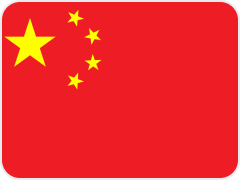
ACFTA
ASEAN-People's Republic of China Comprehensive Economic Cooperation Agreement
1 July 2005
The Significance of the Agreement
Agreement Overview
The ASEAN-People's Republic of China Comprehensive Economic Cooperation Agreement (ACFTA) is an agreement aimed at enhancing economic cooperation and reducing trade and investment barriers between the 10 ASEAN countries (Brunei, Cambodia, Indonesia, Laos, Malaysia, Myanmar, the Philippines, Singapore, Thailand, Vietnam) and China. ACFTA promotes cooperation in various areas including goods, services, investment, and human resource development, with the goal of economic integration.
Key Benefits

Reducing tariff and non-tariff barriers to promote trade among member countries.

Increasing bilateral investments through investment protection and promotion clauses.

Stimulating economic growth and creating jobs in participating countries.

Enhancing the stability and efficiency of regional supply chains.

Promoting economic cooperation through market opening and regulatory relaxation in services and finance.
Expected Effects
- Increased
Exports - Investment
Inflow - Strengthened
Economic
Ties
-
Increased Exports
Expanding the market for Philippine agricultural products, seafood, and electronic goods in China.
-
Investment Inflow
Encouraging Chinese technology and financial services to invest in the Philippines.
-
Strengthened Economic Ties
Enhancing mutual economic ties and fostering sustainable growth.
The Significance of the Agreement Signing
The signing of the ACFTA represents a significant milestone in regional relations. The key significances are:
Deepened Economic Integration
ACFTA promotes economic integration between ASEAN and China, increasing economic interdependence and strengthening cooperative relationships. This leads to the activation of trade and investment, fostering sustainable economic growth.
Strengthened Global Economic Order
ACFTA strengthens the multilateral trading system and counteracts protectionist tendencies, creating a free and fair trade environment. This stabilizes the global economic order and helps both regions maintain competitiveness in the global market.
Stabilized Supply Chains
ACFTA supports human resource development through various programs, including training and educational exchanges. This improves skills and capacities in both regions, contributing to long-term economic growth.
Support for SMEs
ACFTA expands opportunities for small and medium-sized enterprises (SMEs) to access new markets and participate in international trade. This promotes the growth and development of SMEs and increases inclusivity and diversity in both economies.
Promotion of the Digital Economy
ACFTA supports the growth of financial services by opening financial markets and relaxing regulations. This helps both regions enhance economic competitiveness through financial technology innovation.
Importance of Target Country Markets in the Agreement
Overview of China
China is the second-largest economy in the world with a highly developed industrial base and advanced technology. China offers significant market opportunities for Philippine products and services due to its high purchasing power and demand for high-quality goods.
Economic Significance
- i. Large Consumer Market: China has a vast consumer market with high purchasing power.
- ii. Technological Advancement: China is a global leader in technology and innovation.
- iii. Economic Growth: China has a stable economy with significant growth potential in various sectors.
Major Industries and Trade Items
China is a leading producer of electronics and electronic components.
China has a strong machinery and equipment industry.
China is a major importer of agricultural products.
FTA Negotiation Timeline
November Negotiations commenced
November Framework Agreement signed.
January Agreement on Trade in Goods entered into force for PH.
July Agreement on Trade in Services entered into force for PH.
February Agreement on Investment entered into force for PH.
Agreement Document
Partner Country Information
Country Overview and Economic Trends

-
Capital
Beijing
-
Language
Chinese (Mandarin)
-
Population
Approximately 1.4 billion
-
Economy
Highly developed and technologically advanced, major industries include electronics, machinery, and financial services.
-
Trade
In 2023, trade volume with the Philippines was approximately $68 billion, with major Philippine exports being electronics and agricultural products, and imports being machinery and textiles.
Trade and Investment Opportunities
-
Trade Opportunities
China offers substantial potential for Philippine exports of electronic products, agricultural products, and seafood.
-
Electronic Products
Philippine electronic components and appliances have high demand in the Chinese market.
-
Agricultural Products
Philippine mangoes, bananas, and other agricultural products are popular among Chinese consumers.
-
Seafood
High demand for Philippine tuna, shrimp, and other seafood in China's food market.
-
Investment Opportunities
There are numerous opportunities for Philippine companies to invest in China's technology, manufacturing, and service sectors.
-
Technology
Philippine IT companies can collaborate with Chinese tech firms to enhance competitiveness in the global market.
-
Manufacturing
Philippine manufacturing companies can leverage China's advanced manufacturing technology to improve production efficiency.
-
Services
Philippine service companies can enter the Chinese market to provide a range of services, including business process outsourcing (BPO) and financial services.
Origin Determination Document

ATIGA
ASEAN Free Trade Area
1 January 1993
The Significance of the Agreement
Agreement Overview
The ASEAN Free Trade Area (ATIGA) is a trade bloc agreement aimed at enhancing economic cooperation and reducing trade barriers among the 10 ASEAN member countries: Brunei, Cambodia, Indonesia, Laos, Malaysia, Myanmar, the Philippines, Singapore, Thailand, and Vietnam. ATIGA promotes the free flow of goods, services, and investments among member countries with the goal of creating a single market and production base.
Key Benefits

Reducing tariff and non-tariff barriers to promote trade among member countries.

Increasing bilateral investments through investment protection and promotion clauses.

Stimulating economic growth and creating jobs in participating countries.

Creating a single market and production base to enhance economic integration.

Enhancement: Enhancing the competitiveness of ASEAN businesses in the global market.
Expected Effects
- Increased
Exports - Investment
Inflow - Strengthened
Economic
Ties
-
Increased Exports
Expanding market access for Philippine products within ASEAN member countries.
-
Investment Inflow
Attracting investments from other ASEAN countries into the Philippines.
-
Strengthened Economic Ties
Strengthening economic ties and fostering collaboration among ASEAN member countries.
The Significance of the Agreement Signing
The signing of the AFTA represents a significant milestone in regional economic integration. The key significances are:
Deepened Economic Integration
ATIGA promotes economic integration among ASEAN member countries, increasing economic interdependence and strengthening cooperative relationships. This leads to the activation of trade and investment, fostering sustainable economic growth.
Strengthened Global Economic Order
ATIGA enhances the competitiveness of ASEAN businesses by creating a larger, integrated market. This allows businesses to achieve economies of scale and compete more effectively in the global market.
Stabilized Supply Chains
ATIGA supports the optimization of supply chains within the ASEAN region, improving the efficiency and stability of production networks. This is crucial for enhancing supply chain resilience during global crises.
Support for SMEs
ATIGA expands opportunities for small and medium-sized enterprises (SMEs) to access new markets and participate in regional trade. This promotes the growth and development of SMEs and increases inclusivity and diversity in the regional economy.
Enhanced Consumer Choices
ATIGA increases the variety of goods and services available to consumers in the ASEAN region, promoting consumer welfare through better choices and competitive prices.
Importance of Target Country Markets in the Agreement
Overview of ASEAN Member Countries
ASEAN consists of 10 member countries with diverse economies and significant growth potential. The integration of these markets provides vast opportunities for businesses within the region.
Economic Significance
- i. Large Combined Market: ASEAN has a combined population of over 650 million people, creating a substantial consumer market.
- ii. High Economic Growth: ASEAN countries collectively exhibit high economic growth rates, offering dynamic markets for trade and investment.
- iii. Strategic Location: ASEAN is strategically located in the Asia-Pacific region, serving as a gateway to other major markets.
Major Industries and Trade Items
Electronics, automotive, textiles, and machinery.
Rice, palm oil, rubber, and tropical fruits
financial services, and information technology.
FTA Negotiation Timeline
January Agreement on the CEPT-AFTA was signed
February ATIGA signed
March FTA upgrade negotiations launched
Agreement Document
Partner Country Information
Country Overview and Economic Trends
A brief overview of the economic profiles and key trends of the ASEAN member countries.

-
Capital
Bandar Seri Begawan
-
Population
Approximately 430,000
-
Economy
Oil and gas-based economy with significant revenues from petroleum exports.
-
Trade Opportunities
Export of oil and gas products; import of consumer goods and machinery.
-
Investment Opportunities
Energy, finance, and halal food production sectors.

-
Capital
Phnom Penh
-
Population
Approximately 16.7 million
-
Economy
Agriculture-based with growing garment, construction, and tourism sectors.
-
Trade Opportunities
Export of garments, rice, and rubber; import of machinery and petroleum products.
-
Investment Opportunities
Garments, agriculture, and tourism sectors

-
Capital
Jakarta
-
Population
Approximately 273 million
-
Economy
Largest economy in ASEAN with diverse sectors including manufacturing, mining, and agriculture.
-
Trade Opportunities
Export of palm oil, coal, and textiles; import of machinery and chemicals.
-
Investment Opportunities
Infrastructure, manufacturing, and digital economy sectors.

-
Capital
Vientiane
-
Population
Approximately 7.2 million
-
Economy
Agrarian economy with growing hydropower and mining sectors.
-
Trade Opportunities
Export of electricity, timber, and coffee; import of machinery and consumer goods.
-
Investment Opportunities
Hydropower, mining, and agriculture sectors.

-
Capital
Kuala Lumpur
-
Population
Approximately 32 million
-
Economy
Mixed economy with strong industrial, manufacturing, and service sectors.
-
Trade Opportunities
Export of electronics, palm oil, and petroleum; import of machinery and chemicals.
-
Investment Opportunities
Manufacturing, services, and digital economy sectors.

-
Capital
Naypyidaw
-
Population
Approximately 54 million
-
Economy
Agriculture-dominated with emerging energy and mining sectors.
-
Trade Opportunities
Export of natural gas, beans, and pulses; import of machinery and consumer goods.
-
Investment Opportunities
Energy, mining, and agriculture sectors.

-
Capital
Singapore
-
Population
Approximately 5.7 million
-
Economy
Highly developed free-market economy with strong financial, trade, and logistics sectors.
-
Trade Opportunities
Export of electronics, pharmaceuticals, and machinery; import of raw materials and consumer goods.
-
Investment Opportunities
Finance, logistics, and digital economy sectors.

-
Capital
Bangkok
-
Population
Approximately 70 million
-
Economy
Diverse economy with robust manufacturing, agriculture, and tourism sectors.
-
Trade Opportunities
Export of electronics, automobiles, and rice; import of machinery and chemicals.
-
Investment Opportunities
Automotive, tourism, and digital economy sectors.

-
Capital
Manila
-
Population
Approximately 113 million
-
Economy
Service-oriented with significant contributions from agriculture and manufacturing.
-
Trade Opportunities
Export of electronics, machinery, and fruits; import of machinery and fuel.
-
Investment Opportunities
Manufacturing, BPO, and tourism sectors.
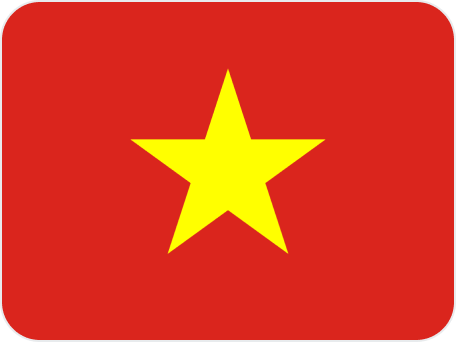
-
Capital
Hanoi
-
Population
Approximately 97 million
-
Economy
Rapidly growing economy with strong manufacturing, agriculture, and service sectors.
-
Trade Opportunities
Export of textiles, electronics, and footwear; import of machinery and chemicals.
-
Investment Opportunities
Manufacturing, agriculture, and digital economy sectors.





